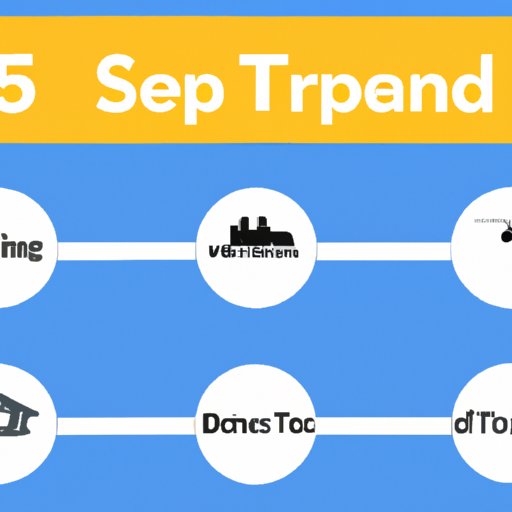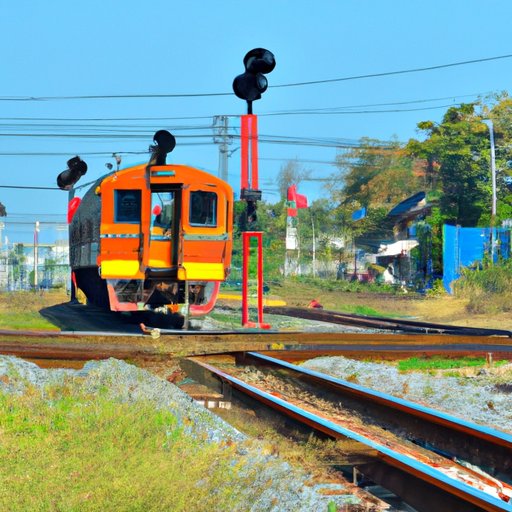Introduction
Railroad safety is a crucial aspect of rail transport as it impacts every person taking the train, employees working in the railroad industry, and members of communities surrounding the tracks. Over the years, numerous developments have contributed to improving railroad safety, reducing accidents and fatalities. In this article, we will take a closer look at the top five developments that revolutionized railroad safety and explore how technology, regulations, and education continuously play a significant role in keeping rail travel safe for everyone.
A History of Railroad Safety Improvements
The earliest locomotives posed a range of safety issues, including limited visibility and the inability to control the speed effectively. However, developments soon followed to address these issues and improve safety. One of the greatest milestones in the evolution of railroad safety is the development of air brakes by George Westinghouse in 1869. These brakes allowed train operators to stop trains quickly, leading to a significant reduction in accidents.

Top 5 Greatest Developments in Railroad Safety
Here are the top five most significant developments in the history of railroad safety:
1. Positive Train Control (PTC)
PTC is a wireless communication system that monitors train movements and is capable of automatically stopping a train to prevent collisions, derailments, and other accidents. The system first gained recognition in the Rail Safety Improvement Act of 2008, and as of December 2020, PTC systems were installed on track segments across the United States, making the rail network safer for all.
2. Track Circuit Interrupter (TCI)
TCI is a safety system that has been in use since the early 20th century. It ensures that a track’s condition is constantly monitored by interrupting an electrical circuit if a flaw is detected. The interruption alerts the train’s engineer, and the train is prevented from traveling on the dangerous track section. This system has prevented numerous accidents and has helped keep the train safe.
3. Automatic Train Stop (ATS)
ATS is another technology that has contributed to the improvement of safety, particularly in the urban areas where there is high congestion of trains. The technology automatically applies the train’s brakes if it exceeds a particular speed limit. This system is an essential backup to the human operator and offers another level of protection.
4. The ECP brake system
The Electronic Controlled Pneumatic (ECP) brake system is an advanced system that employs specific algorithms to optimize the performance of air brakes. The system provides instant pressure adjustments, which improves the transport safety and contributes to cost savings by reducing train delays, energy consumption, and asset wear and tear.
5. Modern Signaling and Communications
Modern signaling and communication technologies include GPS and wireless data transmission technologies that have enabled train operators to communicate with each other, share information, and detect potential safety risks in real-time.
How Technology Has Made Rail Travel Safer
Technology has made significant contributions to improving safety in rail transport. One of the most remarkable technologies is GPS tracking. It allows trains to be tracked and monitored in real-time, giving train operators and customers a better understanding of the train’s location, speed, and direction of travel. Moreover, wireless data transmission technologies like Wi-Fi and Bluetooth have provided better communication with rail operators, reducing the likelihood of accidents and allowing quick resolution of any issues that arise.
The Impact of Regulations on Railroad Safety
The government plays a crucial role in regulating the railroad industry, which, in turn, has helped improve safety. Since the establishment of the Federal Railroad Administration (FRA), multiple safety regulations have been implemented to address various safety concerns. The Rail Safety Improvement Act of 2008 was passed by Congress to mandate the installation of PTC systems on rail tracks nationwide.
Understanding the Role of Education in Railroad Safety
Education and training are essential to improving safety on railroads. Railroad employees must be trained to operate machinery safely and must be aware of all potential hazards. The training enables them to identify safety risks and enables the quick response in the event of an issue or accident.
Real-Life Stories of Rail Accidents and How Safety Measures Prevented Tragedies
There are numerous real-life stories of near misses and accidents in the railroad industry. Some of the most notable ones include the 1987 Chase, Maryland, derailment incident, and the 2008 Chatsworth train collision. However, safety measures that were implemented prevented more accidents and tragedies from happening.
Balancing Safety and Efficiency in Rail Transport
There is a balance that must be maintained between safety and efficiency in the railroad industry. Safety measures can lead to slower transport, which could result in reduced efficiency. However, efficiency alone should not compromise the safety standards. Companies that have successfully balanced safety and efficiency include Union Pacific, which conducts regular security and safety training, and BNSF Railway, which spends billions of dollars annually on safety and reliability improvements.
Conclusion
Rail safety is a constant work in progress. With the help of advanced technology, new safety systems, and proper education, the industry is continuously working towards improving rail transport safety. However, it must be noted that rail safety remains a complex issue with challenges that must be overcome. Ongoing government regulations, education, and technological advancements must work hand in hand with a focus on balancing efficiency with safety to ensure that rail transport remains a safe and reliable mode of transportation for everyone.
